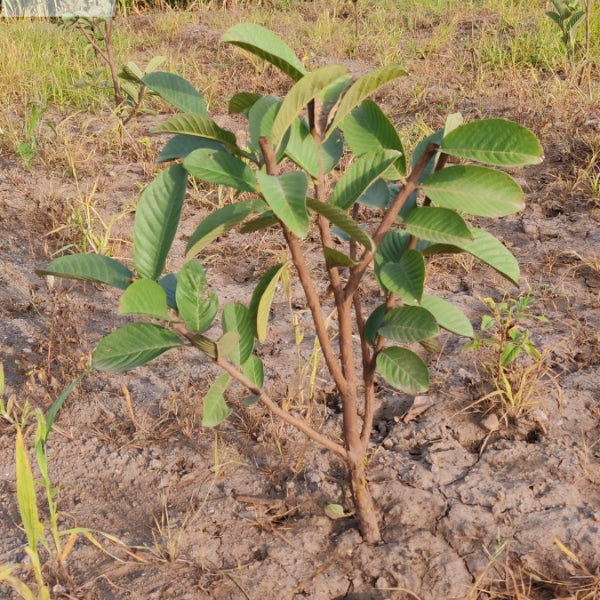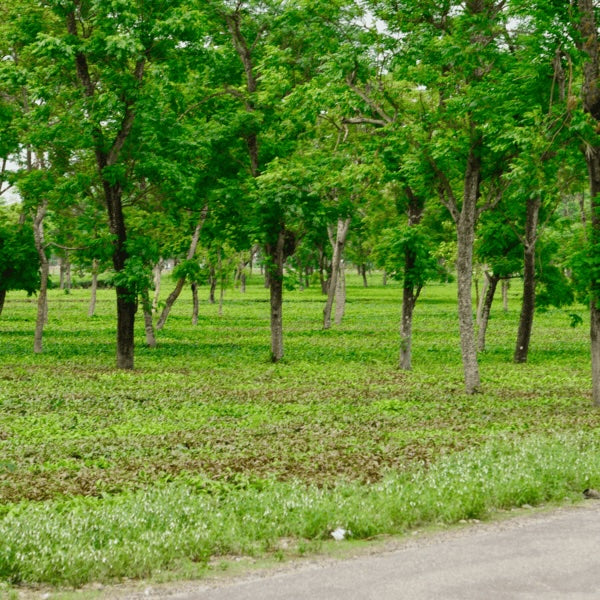Carbon Footprint of Ride-Sharing (Uber, Ola, Lyft, etc.)
Understanding the Carbon Footprint of Ride-Sharing: A Path to Sustainable Travel In today's fast-paced world, ride-sharing services like Uber, Ola, a Read more
Connect with us
-
👥 Corporates
If you are looking for:
- 🌲 Tree Plantation Events
- 📊 CSR Projects
📧 corporate@growbilliontrees.com
📞 +91 9699723523
💬 +91 9370599291 WhatsApp (Only)
🕒 Mon - Sat | 10am - 7pm IST
-
🧩 Tree Plantation NGOs
If you are looking for:
- 💰 Financial Assistance
- 🤝 Operational Support
📧 support@growbilliontrees.com
📞 +91 9699723523
💬 +91 9370599291 WhatsApp (Only)
🕒 Mon - Sat | 10am - 7pm IST
-
🌼 Individuals
If you are looking for:
- 👥 Group Tree Plantation Drive
- 🌳 Bulk Tree Plantation
📞 +91 9699723523
💬 +91 9370599291 WhatsApp (Only)
🕒 Mon - Sat | 10am - 7pm IST
Trending
Trees for Corporates
Understanding the Carbon Footprint of Ride-Sharing: A Path to Sustainable Travel
In today's fast-paced world, ride-sharing services like Uber, Ola, and Lyft have revolutionized the way we travel. But as we enjoy the convenience of these platforms, it's crucial to consider their environmental impact. The carbon footprint of ride-sharing is a pressing issue that affects our planet's health. Understanding this impact not only helps us make informed choices but also empowers us to contribute to a more sustainable future.
What is Grow Billion Trees Team?
The Grow Billion Trees Team is an initiative dedicated to combating climate change through reforestation. By planting trees, this team aims to absorb carbon dioxide from the atmosphere, thereby reducing the overall carbon footprint. Their mission is to engage communities, raise awareness, and promote sustainable practices that benefit both the environment and society.
Why Grow Billion Trees Team Matters for the Planet
Every tree planted is a step towards healing our planet. The Grow Billion Trees Team inspires individuals and organizations to take action against climate change. By focusing on reforestation, they not only help in carbon sequestration but also restore biodiversity, improve air quality, and enhance the beauty of our landscapes. Together, we can create a greener, healthier world for future generations.
Factors Contributing to Carbon Footprint
- Vehicle Type: Different vehicles have varying emission levels. Electric vehicles (EVs) generally have a lower carbon footprint compared to gasoline or diesel vehicles.
- Distance Traveled: The longer the ride, the higher the emissions. Short trips can often be more carbon-intensive per mile.
- Passenger Count: Carpooling reduces the carbon footprint per passenger, making shared rides more eco-friendly.
- Driving Behavior: Aggressive driving, idling, and frequent stops can increase fuel consumption and emissions.
- Time of Day: Traffic congestion can lead to longer travel times and increased emissions.
Example Calculation
To understand how the carbon footprint is measured, let's consider a simple example:
- Distance of ride: 10 miles
- Average emission factor for a gasoline vehicle: 404 grams of CO₂ per mile
Calculation: 10 miles × 404 grams/mile = 4040 grams of CO₂ (or 4.04 kg of CO₂).
For context, a flight from Delhi to Mumbai emits approximately 115 kg of CO₂, which is equivalent to running a refrigerator for about 6 months!
Tips to Reduce Carbon Footprint
- Opt for Carpooling: Share rides with others to reduce the number of vehicles on the road.
- Choose Electric Vehicles: Whenever possible, select rides in electric or hybrid vehicles.
- Plan Efficient Routes: Use navigation apps to avoid traffic and reduce travel time.
- Limit Short Trips: Consider walking or biking for short distances instead of using ride-sharing services.
- Support Eco-Friendly Initiatives: Engage with companies that prioritize sustainability and carbon offset programs.
FAQs
1. How does ride-sharing compare to traditional taxi services in terms of carbon footprint?
Ride-sharing services can be more efficient than traditional taxis, especially when they promote carpooling. However, the overall carbon footprint depends on factors like vehicle type and distance traveled.
2. Can I offset my ride-sharing carbon footprint?
Yes! You can offset your carbon footprint by participating in tree-planting initiatives like Grow Billion Trees, which helps absorb CO₂ from the atmosphere.
3. Are electric ride-sharing options available?
Many ride-sharing companies are now offering electric vehicle options. Check your app for availability in your area.
4. What is the most eco-friendly way to use ride-sharing services?
The most eco-friendly way is to carpool, choose electric vehicles, and limit the number of short trips. Planning your rides can also help minimize emissions.
Conclusion
As we embrace the convenience of ride-sharing, it's essential to be mindful of our carbon footprint. By understanding the impact of our travel choices and supporting initiatives like Grow Billion Trees, we can contribute to a healthier planet. Join the movement and plant trees with Grow Billion Trees to offset your footprint. Together, we can make a difference!
You may like
Ride-Sharing Emissions
Ah, the sweet smell of convenience! But wait, what’s that lurking in the air? It’s the emissions from your favorite ride-sharing service! While you’re busy hailing an Uber or Ola, remember that every ride contributes to the carbon footprint. It’s like a game of hide and seek, but instead of finding your friend, you’re just finding more CO2 in the atmosphere. So, next time you’re about to book that ride, consider carpooling or taking public transport. Your lungs (and the planet) will thank you!
Sustainable Ride-Sharing
you’re cruising in a hybrid Uber, sipping your organic latte, and feeling like a green superhero. Sustainable ride-sharing is the new black! Companies are now investing in electric vehicles and eco-friendly practices to reduce their carbon footprint. So, while you’re busy scrolling through your phone, you can also feel good about saving the planet one ride at a time. Just remember, even superheroes need to recharge—so don’t forget to plug in those electric cars!
Carpooling Benefits
Why ride solo when you can share the ride? Carpooling is like a social event on wheels! Not only does it cut down on emissions, but it also saves you some serious cash. Think of it as a mini road trip with friends, minus the awkward small talk. Plus, you’ll be reducing traffic congestion and making the world a better place. So, gather your pals, hop in, and let the good times roll—while keeping that carbon footprint in check!
Ride-Sharing vs. Public Transport
ride-sharing or public transport? It’s like choosing between pizza and tacos—both delicious, but one might be a bit more eco-friendly. Public transport is often the greener option, with fewer emissions per passenger. But hey, if you’re in a pinch and need to get somewhere fast, ride-sharing can be a lifesaver. Just remember to weigh the options and consider the impact on Mother Earth. After all, she’s the one who’s really driving this conversation!
Carbon Offset Programs
Feeling guilty about your ride-sharing habits? Enter carbon offset programs, the guilt-free pass to ride in style! These programs allow you to invest in projects that reduce greenhouse gases, like planting trees or supporting renewable energy. So, while you’re zipping around town in your Lyft, you can also be a hero for the planet. It’s like buying a ticket to the eco-friendly club—just don’t forget to show your membership card at the next environmental gathering!
Future of Ride-Sharing
Buckle up, folks! The future of ride-sharing is looking greener than ever. With advancements in technology and a push for sustainability, we might soon see fleets of electric vehicles zipping around our cities. Imagine a world where your ride is not only convenient but also carbon-neutral! It’s like a sci-fi movie, but with less drama and more eco-friendly vibes. So, keep your eyes peeled for the next big thing in ride-sharing—it might just be the ride of your life!
Corporate Plantations
FAQ
What is the carbon footprint of ride-sharing services like Uber and Ola?
The carbon footprint of ride-sharing services can vary based on factors like vehicle type, distance traveled, and passenger count. On average, a single ride can emit around 0.5 to 1.5 kg of CO2. While these services can reduce the number of cars on the road, they can also lead to increased emissions if not used efficiently. At Grow Billion Trees, we advocate for greener alternatives and encourage users to consider carpooling or electric vehicles to minimize their impact.
How does ride-sharing compare to traditional taxi services in terms of carbon emissions?
Ride-sharing services often have a lower carbon footprint than traditional taxis due to their ability to optimize routes and reduce empty miles. However, if ride-sharing leads to more cars on the road, emissions can spike. At Grow Billion Trees, we believe in promoting sustainable practices, so consider sharing rides or opting for electric vehicles to keep those emissions in check!
Can ride-sharing help reduce overall carbon emissions?
Yes, ride-sharing can potentially reduce overall carbon emissions by decreasing the number of vehicles on the road. However, this is only true if users opt for shared rides instead of solo trips. At Grow Billion Trees, we encourage everyone to embrace the sharing economy while also planting trees to offset any remaining emissions. It’s a win-win for the planet!
What role do electric vehicles play in reducing the carbon footprint of ride-sharing?
Electric vehicles (EVs) can significantly reduce the carbon footprint of ride-sharing services. By using EVs, companies like Uber and Ola can cut emissions to nearly zero during operation. At Grow Billion Trees, we support the transition to electric fleets and advocate for more charging infrastructure to make this a reality. Let’s drive towards a greener future!
How can users minimize their carbon footprint while using ride-sharing services?
Users can minimize their carbon footprint by opting for shared rides, choosing electric or hybrid vehicles, and planning trips efficiently. At Grow Billion Trees, we suggest combining rides with public transport or walking when possible. Every little effort counts, and together we can make a significant impact on our planet!
Are ride-sharing companies doing enough to offset their carbon emissions?
While some ride-sharing companies have initiated carbon offset programs, the effectiveness varies. At Grow Billion Trees, we believe that transparency and commitment are key. We encourage users to support companies that actively invest in sustainability and tree-planting initiatives. After all, a greener ride is a happier ride!
What initiatives are ride-sharing companies taking to become more sustainable?
Many ride-sharing companies are investing in electric vehicles, promoting carpooling, and implementing carbon offset programs. However, the pace of change can be slow. At Grow Billion Trees, we urge these companies to ramp up their sustainability efforts and partner with organizations dedicated to reforestation. Let’s make every ride count for the planet!
How does the carbon footprint of ride-sharing impact urban planning?
The carbon footprint of ride-sharing can influence urban planning by highlighting the need for better public transport and green spaces. As cities adapt to increased ride-sharing, they must also consider sustainable infrastructure. At Grow Billion Trees, we advocate for urban designs that prioritize eco-friendly transport options and tree planting to enhance air quality and livability.























